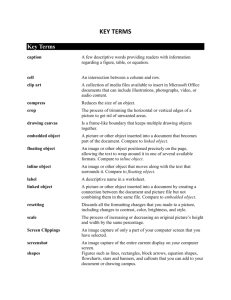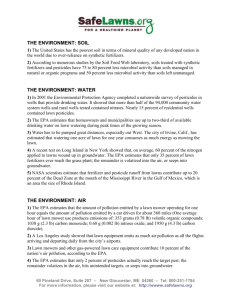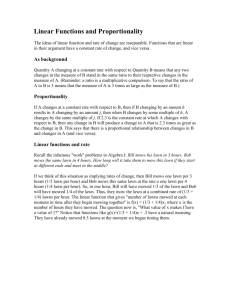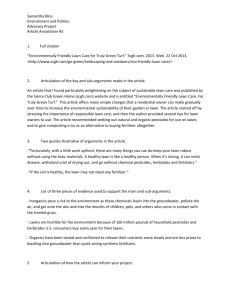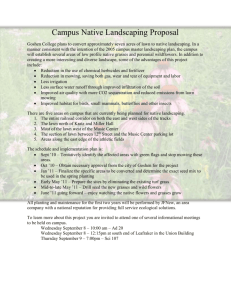- Faculty Web Sites at the University of Virginia
advertisement
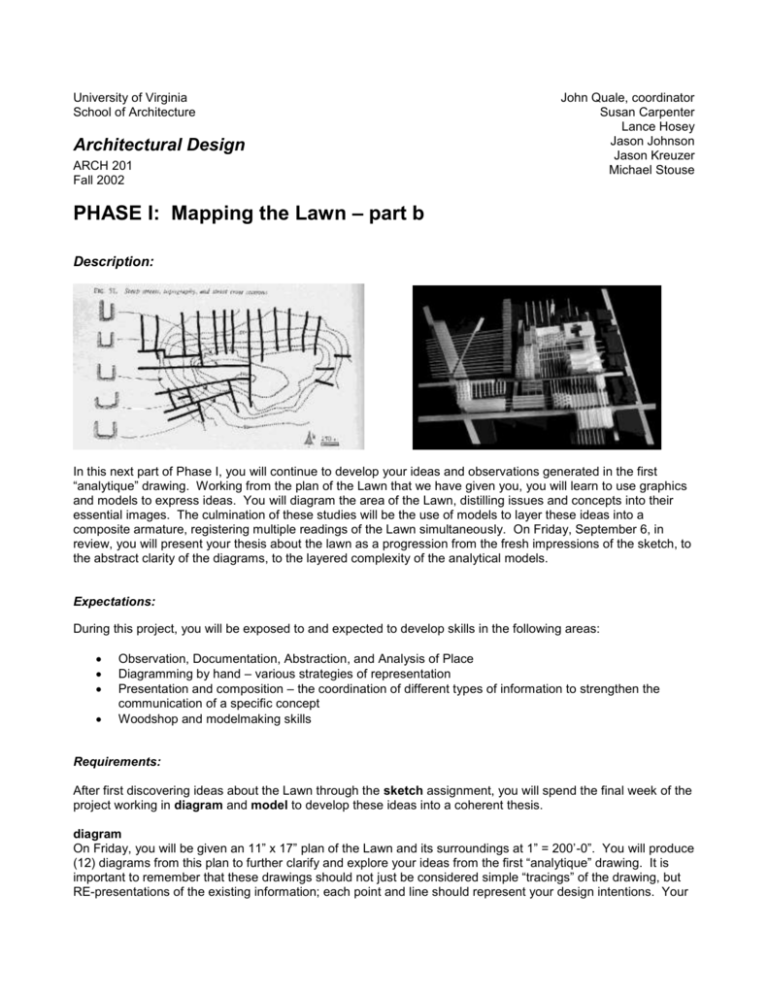
University of Virginia School of Architecture Architectural Design ARCH 201 Fall 2002 John Quale, coordinator Susan Carpenter Lance Hosey Jason Johnson Jason Kreuzer Michael Stouse PHASE I: Mapping the Lawn – part b Description: In this next part of Phase I, you will continue to develop your ideas and observations generated in the first “analytique” drawing. Working from the plan of the Lawn that we have given you, you will learn to use graphics and models to express ideas. You will diagram the area of the Lawn, distilling issues and concepts into their essential images. The culmination of these studies will be the use of models to layer these ideas into a composite armature, registering multiple readings of the Lawn simultaneously. On Friday, September 6, in review, you will present your thesis about the lawn as a progression from the fresh impressions of the sketch, to the abstract clarity of the diagrams, to the layered complexity of the analytical models. Expectations: During this project, you will be exposed to and expected to develop skills in the following areas: Observation, Documentation, Abstraction, and Analysis of Place Diagramming by hand – various strategies of representation Presentation and composition – the coordination of different types of information to strengthen the communication of a specific concept Woodshop and modelmaking skills Requirements: After first discovering ideas about the Lawn through the sketch assignment, you will spend the final week of the project working in diagram and model to develop these ideas into a coherent thesis. diagram On Friday, you will be given an 11” x 17” plan of the Lawn and its surroundings at 1” = 200’-0”. You will produce (12) diagrams from this plan to further clarify and explore your ideas from the first “analytique” drawing. It is important to remember that these drawings should not just be considered simple “tracings” of the drawing, but RE-presentations of the existing information; each point and line should represent your design intentions. Your diagrams may be in plan, section, or axonometric, but you will be required to do at least (2) diagrams of each type, and they all must be to scale. Be sure to consider the entire sheet—remember, the context is as important as the organization of the lawn itself. Each diagram is to be titled: you may choose your own subjects for your diagrams or choose from among the following subjects: cardinal points / solar orientation figure / ground views precincts / fields center / edge axis / organization hierarchy layering: literal and implied symmetry / asymmetry additive / subtractive memory / trace associations history model Through a series of study models, construct the diagrams you have made for the Lawn as a layered construct of frames, volumes, and surfaces. Develop the way you build and connect these layers to emphasize ideas and relationships discovered within the site. Your final model should be able to be understood “in the round”; that is, without a conventional base. Rather, rhythms of site and building, organizational axes, spaces, and views should be threaded together to structure the model in its entirety. Layer the model to be transparent, to reveal a hierarchy of material and concepts and do NOT represent the building literally; each element you build should be an abstraction of an idea or concept previously diagrammed. You will be encouraged and expected to use the woodshop, to some degree, in making this final model. Construct the layered armature of this final model from wood and weave 1-2 other materials into it to represent ideas such as volume, texture, and surface. You may choose from, but are not limited to, the following materials: corrugated cardboard chipboard museum board plexiglass / acetate metal wire mesh fabric Deadlines: For Wednesday 09.04.02 (12) total diagrams of Lawn and its context, ink on trace paper trimmed to 11” x 17”, scale to 1” = 200’0”. These diagrams should at least include: -(2) plan diagrams -(2) section diagrams -(2) axonometric diagrams analytical model, of Lawn and its immediate context, at 1” = 200’-0”, layering systems and rhythms revealed in the diagrams Final Review (1) final analytical model, at 1” = 100’-0” - use structure and material to talk about lawn and its context as a single, integrated construct revise prior work if necessary organize presentation strategy for entire body of work as a thesis—both verbal and graphic—for review For Friday 09.06.02 Resources: graphics Ching, Frank, Architectural Graphics (1975) Ching, Architecture, Form, Space, & Order (1979) Ching, Drawing: A Creative Process (1990) Dripps, R. D., Primer on Composition, available as PDF on course website Morrish, William, Civilizing Terrains: Mountains, Mounds and Mesas (1996), available as PDF on course website Burns, Carol, “On Site”, in Andrea Kahn, ed., Drawing / Building / Text (1991), available as PDF on course website Clark, W.G. “Replacement,” Modulus 20 (1991), available as PDF on course website Holl, Steven, Anchoring : selected projects, 1975-1988. site Lawn / Charlottesville Brawne, Michael, University of Virginia: The Lawn Thomas Jefferson Hershey, George, The Lost Meaning of Classical Architecture Kaufman, Emil, Three Revolutionary Architects Pierson, William, American Buildings and their Architects, pp. 316-334 Scully, Vincent, American Architecture and Urbanism Tzonis and Le Faivre, Classical Architecture, chapters 1 and 2 Wilson, Richard Guy, ed., Thomas Jefferson’s Academical Village: The Creation of an Architectural Masterpiece Wilson, Richard Guy & Butler, Sara A., The Campus Guide: University of Virginia Wilson, Richard Guy, “Jefferson's Academical Village”, Jefferson's Lawn: Perceptions, Interpretations, Meanings, (Chapter 2) Wittkower, Rudolf, Architectural Principles in the Age of Humanism, parts III and IV http://fisher.lib.virginia.edu/collections/giscoll/va_gisdata.html#aerial (good aerial photography source)


